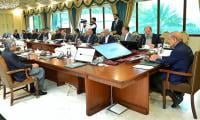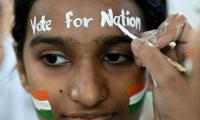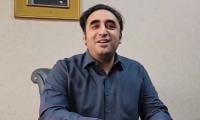During two-day conference on ‘Water Problems in Pakistan and their Solutions’ the experts and speakers from all over the country emphasized to frame viable solutions for water conservation in the country as the scarcity of water affecting the whole life cycle and social economic conditions of Pakistan.
The conference is being organised by Pakistan Nuclear Society (PNS) in collaboration with PAEC, PCRWR, PAS and PSF here in Islamabad. At the inaugural session the General Secretary of PNS, Dr. Farhat Waqar thanked the distinguished guests, speakers and participants of the conference. She gave an overview of goals and objectives of PNS and role of PNS to promote awareness and understanding of the peaceful applications of nuclear science and technology in Pakistan. She told that PNS is regularly conducting seminars and lectures for the promotion of scientific achievements at national level.
Like many other countries of the world, pressure on water resources in Pakistan is increasing rapidly, which warrants to address the water issues at each level of the community. The best possible way is achieved by educating the entire society and formulation of an effective water policy and its ruthless implementations. This conference is encompassing the wide range of topics related to water like water and nuclear industry, water quality, water conservation, water users’ perspectives, water conservation and some other related cross-disciplinary areas. At the inaugural speech of the conference, the President of PNS Dr. Muhammad Ashraf Chaudry said “Water availability, storage, supply and its quality are among the major or key issues, which the world is facing at present. With respect to Pakistan, water related issues have been highlighted by the Government of Pakistan. Pakistan needs to have a strategy to fully exploit viable sources of water and manage its storage, in order to ensure that the Pakistani population will be able to meet its water requirements, in the long-run.
He said that the Pakistan receives a fixed amount of water in form of rain every year while on the other hand its population is increasing day by day. It is said that 16 million people in Pakistan lack access to improved water. According to the Pakistan Social and Living Standard Measurement Survey 2010-2012 the sources of drinking water percentage in use are tap water 30.2 %, hand pump 28%, motor pump 27% dug well 4%, and others are 9%.
The chief guest Shams ul Mulk, former chairman WAPDA said that conference on water issues are need of the country as to discuss the modalities to take concrete steps to conserve water for next generation of the country. He said that Pakistan had never used its rights which were given under Indus River treaty. He said that it is need of time to have a water treaty with Afghanistan also because main source of river water in Pakistan comes from two neighboring countries i.e India and Afghanistan. The main objective of this conference is to seek input from experts on multiple aspects of water-related issues and find viable solutions and frame recommendations for the government (national and concerned) authorities and general public in Pakistan, at large.
Our correspondent adds: A three-day 'Crafts Festival' will be held here from April 19.
At the event to be organised by a local hotel in collaboration with Nomad Art and Cultural Centre, artisans will participate including women from rural areas to display handicrafts of the country. The organisers said the crafts represented a valuable material heritage, which formed a tangible part of our historical and contemporary culture which was aimed to promote and preserve traditional folk crafts of the country. They said different regions and cities specialised in their own particular handicrafts and this was why there was so much diversity and variety in the crafts of the country.
The organisers said in Pakistan, the handicrafts market had seen tremendous growth in the last 10 to 15 years.
The handicrafts include textile items, carpets/rugs, and furniture. According to them, every city has its own handicrafts specialty ranging from fabric, material, embroidery, to jewelry, carving, mirror work, and other handicraft items. Each colour, style, design, and motif carries with it a unique symbol portraying the culture of that particular area and builds on people's indigenous skills.
This image released on September 12, 2023, shows a general view of the University of Management and Technology. —...
Punjab Youth Affairs Minister Malik Faisal Ayub Khokhar gestures during a meeting on March 11, 2024. —...
This photograph shows a Pakistani paramedic checking a child at a telemedicine online treatment centre in Pakistan....
Provincial Minister for Agriculture Ashiq Hussain Kirmani gestures during a meeting and Punjab Agriculture Secretary...
People buy pulses and grains at a wholesale market. — AFP/File LAHORE: Pakistan’s economy will grow at a rate of...
Lahore Development Authority’s Director General, Tahir Farooq presides over first meeting on March 9, 2024. —...







